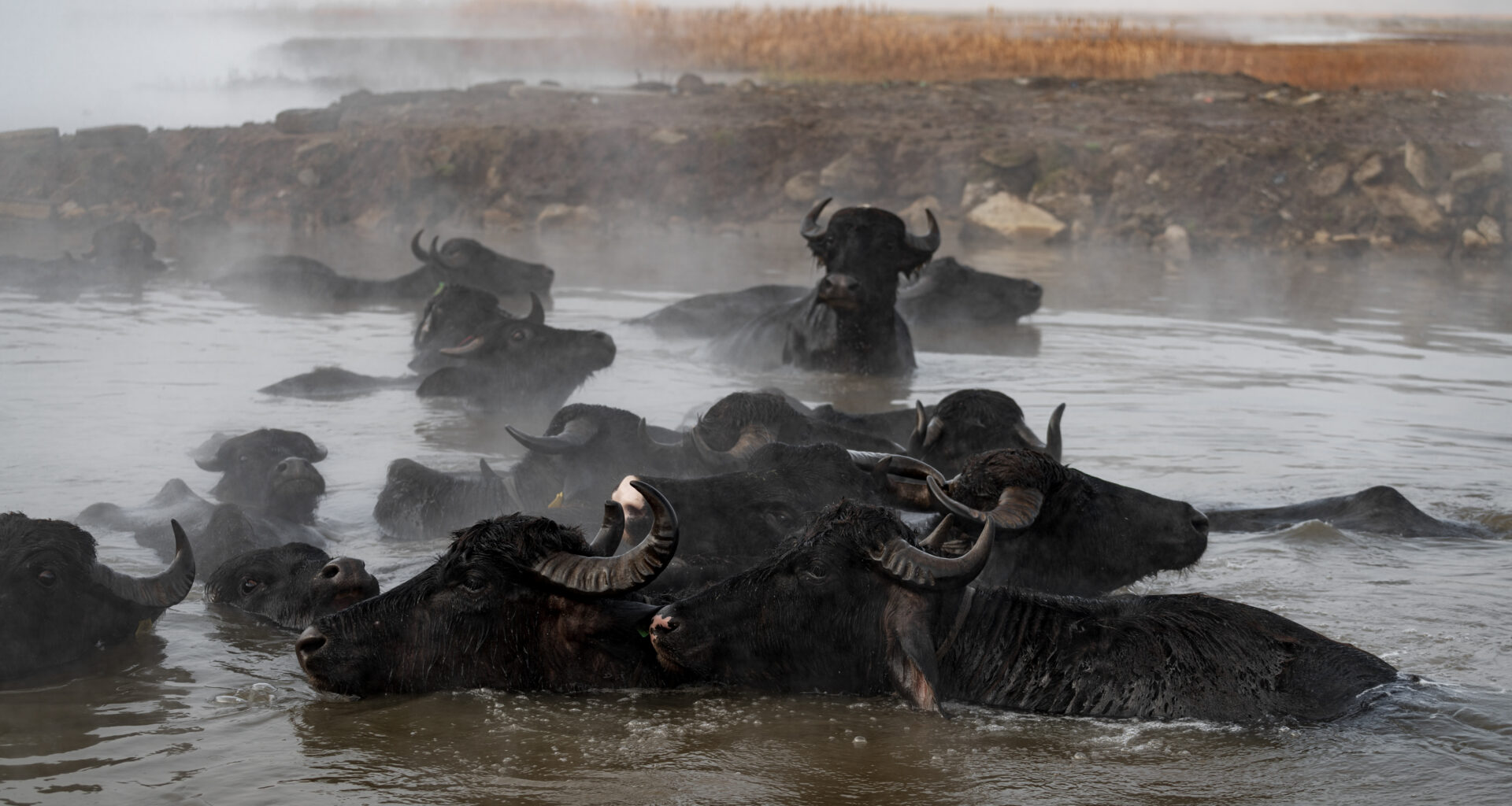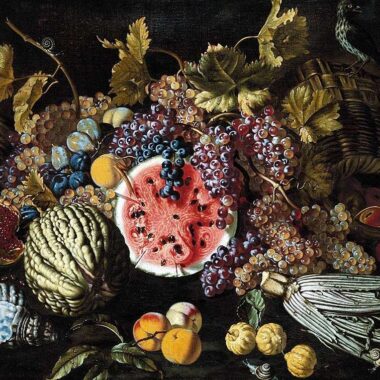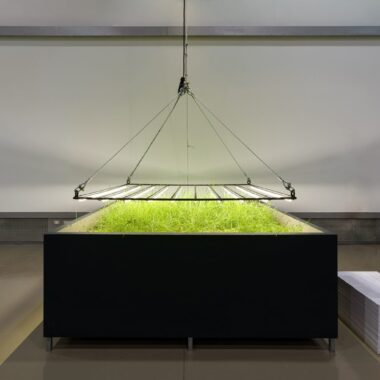As part of our exploration into how food and food systems are emerging as a vital focus of investigative cultural practice, The Common Table talked to curator and researcher Meriç Öner. A trained architect and former Director of Research and Programs at Salt in Istanbul, Öner brings a unique perspective to the intersection of food, culture and art.
The Common Table: You describe yourself as a curator and researcher in urban matters and material culture but your work has often crossed paths with food and foodways. Can you explain why, in your view, food is such an effective tool for critical culture?
Meriç Öner: I was involved in the founding and running of a cultural institution in Istanbul from 2009 to 2021 called Salt where a lot of our programming revolved around food. There was always discourse around what was happening to the planet, and the institution was built on the issue of how institutions in general should respond to the climate crisis and other ecological impasses. Part of that was discussing agriculture, food and related cultures. We didn’t even use the word sustainability, it’s so tainted, in my opinion.
We had two venues, where we either hosted or collaborated with communities around food based in Istanbul. For instance, one of them was a group of chefs and designers who had a mission to make traditional Anatolian cuisine products “cooler” for the youth. This was their terminology. They would ask “Could höşmerim be as cool as cheesecake?” – the latter being quite popular at the time. They would organise talks, screenings and workshops around such ideas.
We didn’t even use the word sustainability, it’s so tainted, in my opinion.
For a brief time in 2018 and 2019, before the pandemic, we reintroduced the Salt Beyoğlu cafe as the “Kitchen” and invited groups to come and bake there, because I believe one of the most important factors about food is the talk around it. We would collectively announce workshops to knead and bake bread in the wood oven. The bakers would come in with their yeasts and flour and exchange recipes and conversations with the participants.
Precedent to this initiative was the 2017 Urban Baker programme, which was part of a project by my colleague and curator November Paynter with Amy Franceschini of Futurefarmers. Amy undertook a voyage between a port in Oslo, Norway and Istanbul called Seed Journey in a sailing ship carrying seeds “rescued” from the Northern Hemisphere in a “deterritorialising” route back to the Middle East. When I look back, these moments jump to my mind about my curatorial involvement and learning around food.
The Common Table: Tell us about your curation of the “Climavore” project exhibition by Cooking Sections at Salt. What did you learn from commissioning them and your involvement?
Meriç Öner: I first met Cooking Sections (Daniel Fernández Pascual and Alon Schwabe) at a conference in 2017. I was interested in their research initially, and their Empire Remains project. It was a speculative shop designed to sell back the remains of the British Empire along the lines of the Empire Shops from the 1920s, which were created to get the British public familiar with goods and foodstuffs from the colonies.
Cooking Sections’ research with us resulted in five different case studies from their Climavore perspective.
My initial thought was to invite them to do something similar at Salt with the Ottoman Empire together with our research team. What came out of it instead was the 2021 exhibition CLIMAVORE: Seasons Made to Drift, which was about the seven core climatic regions of the Republic of Turkey that have been greatly changed by decades of industrialisation, globalisation, displacement and climate-related events. The Ottoman angle did help us think through the geographies, timelines, communities of different backgrounds and understanding of regional produce. Take hazelnuts, for example, [Turkey grows and processes the majority of the world’s hazelnuts. Read more.] with climate change, you can’t get the same yields that you used to around the Black Sea so now farmers are starting to grow at higher altitudes, which they would never have dreamed of before because the quality higher up was never considered optimum.
Cooking Sections’ research with us resulted in five different case studies from their Climavore perspective. One of them, “Traces of Escapees” looked at genetic disruptions caused by fish farms along Turkey’s Mediterranean coast. Working with evolutionary geneticist Emre Keskin, they analysed samples from farmed and wild sea bream and sea bass along the coast of Muğla to see how they had intermingled.
Another of the case studies was one that later became a long-term project called “The Lasting Pond”, which looked at how the drainage of wetlands for big building projects like the new airport had affected the land and migration paths of water buffaloes and their herders. The project later expanded into a piece called “Wallowland” for the 2022 Istanbul Biennial and their initiation of the Manda Festivali (Water Buffalo Festival) hosted in Ağaçlı village on the outskirts of Istanbul.
I enjoyed curating the process and appreciate the fact that a line of that research continues strongly, and also continues giving back to Istanbul buffalo herders.
This collaboration was a specific model where the institution served as the research base for the artists. In my opinion, it was intellectually generous and collaborative as institutions should be. I enjoyed curating the process and appreciate the fact that a line of that research continues strongly, and also continues giving back to Istanbul buffalo herders.
The Common Table: You are a participant in the Onassis AiR Extended Research Residencies programme for 2024/25 with your long-term research project Saving/s? Can you tell us a bit about it and what it has to do with food?
Meriç Öner: I think being embedded in an institution that has these outlets, in the sense of talking about culture through food as well, probably shaped some of my thinking, which led to this mentioned collaboration with the Cooking Sections. But Saving(s)? is more about impact.
It doesn’t come directly from food or architecture or finance but it collects them, in a sense. It stems from this collective anxiety of trying to save things and takes a broader contextual perspective, because, in my experience, research and exhibitions are more successful when they’re trying to speak to more people and not just discipline-based.
In my experience, research and exhibitions are more successful when they’re trying to speak to more people and not just discipline-based.
I’m somehow anxious about this anxiety of the current moment when we’re trying to save everything. It’s heightened by the state of the economy – globally but also in Turkey, which is going through a really hard time economically. So the wordplay of the title Saving/s? addresses this issue, because I’m also trying to understand what is important and what the priorities are. Having my research revolve around many different fields helps me to find this greater context.
In this sense, food here is quite an inspiration. When we talk about cultural heritage, architectural heritage and artworks, there is this mythical preservation field built around them and we’re always thinking about eternity. We humans have a lifespan, sometimes it’s very short, sometimes longer, but then we die. What’s the actual reflex in trying to make things live longer than us, the whole legacy thing? I was based in Athens while I was asking these more poetic questions about different kinds of preservation and legacy. Artworks and cultural objects were, obviously, one aspect but food was another.
When we talk about cultural heritage, architectural heritage and artworks, there is this mythical preservation field built around them and we’re always thinking about eternity.
Food has a lifespan through seasonality. When we pickle or make wine or use other fermentation techniques, we’re trying to make foodstuffs last longer than the season but it doesn’t mean that we’re trying to make them eternal. They’re part of a cycle and we accept it. It’s a reminder that there’s a thing called “end of life”, and there’s a way of speaking about it through vegetables, pickles and wine in terms of a “best before use” date, an ordinary deadline…
I also had little side talks with people about what they have tried to preserve for themselves. Most of their answers were quite intimate and emotional, related to moments and people. Food came up a lot in this respect too because it was both a trigger and marker of memories.
Food has a lifespan through seasonality. When we use fermentation techniques, we’re trying to make foodstuffs last longer than the season but it doesn’t mean that we’re trying to make them eternal.
The Common Table: The critical political ecologist Dr Muna Dajani spoke very movingly recently about “saving seeds not as a relic of the past but as a way to survive as a people” in the context of what’s happening in Palestine right now. Could you perhaps draw a thread between food preservation techniques in the form of pickles, ferments and seed preservation – perhaps even microbial cultural preservation in foodstuffs like kimchi or sourdough – and cultural preservation or values?
Meriç Öner: Definitely. The fascinating thing about all these techniques is that they give you all the clues, in a sense. The major reason I like architecture is similar. You can look at a building and start to think about, let’s say, the economy around it. These food products help you think through ecology, geography, climate, traditions and the whole culture built around them.
When I was doing the Onassis AiR residency last autumn, this was a talking point in Athens too. There was a moment, probably around the 1980s, when people stopped making pickles and the practice was frowned upon in Greece. This is all connected to status and the wealth aspect of savings. For me, they are all connected. Making food by hand is a form of living for both microbes and people. I think we are at a critical moment where we are turning back to these practices and of course, it has a lot of social and political connotations.
Food products help you think through ecology, geography, climate, traditions and the whole culture built around them.
The Common Table: Do you believe there is a shift in focus in terms of urban, cultural and material research towards something far more relational and complex?
Meriç Öner: Definitely there is a growing interest in what I will broadly call the “rural” because it is the place where all these varied techniques were amassed. Unlike the cities where everything was “modernised” and became more or less homogenous throughout the world. The rural always brings complexities with it because it connects back to the climate, back to culture, back to society.
The Common Table: From your point of view as a curator how do you envisage this shift of focus to at least include food production and preservation, alongside energy production (or perhaps as another aspect of energy production, which is what it is) affecting the exhibition visitor experience?
The rural always brings complexities with it because it connects back to the climate, back to culture, back to society.
In the exhibition context, I always find it much more interesting if we can generate discussions where someone could come and say, “Oh, my grandmother used to make pickles like these!”. This is, in a sense, what non-discriminating audience spaces are all about. In places where there can be multiple, sharp but also common viewpoints, I think food can help to have even very difficult conversations.
When you keep an exhibition at a textbook level within a particular literature or discipline, your intent is to reach maybe your peers or related experts, or perhaps to teach the audience (which I find exceptionally arrogant). I really value the intervention of food because it helps build a relationship with the people and potentially includes their experience. Otherwise, you are just broadcasting your ideas to them. But please note, I’m not saying that food should become a go-to angle, some sort of an exhibition prop. I would be considerate of its inclusion, depending on the topic. However, its capacity to evoke times and spaces as well as form conversation points is immense.
In places where there can be multiple, sharp but also common viewpoints, I think food can help to have even very difficult conversations.
The Common Table: In terms of curating and exhibiting. Do you think we’re going to leave the gallery and museum spaces and thereby these difficult thresholds behind and if so, in what ways?
I have an answer to this question, but it doesn’t necessarily reflect reality. The reason I’m out of “the institution” is not to make my life easier but as a result of the bureaucracy of any institution becoming extremely controlling. Also, the economic model is wrong. It doesn’t work. Exhibitions are funded. Even when you charge fees, the sum is not equal to the expenses. This means people would not pay to see what we’re doing. And this is the major problem. We may be fooling ourselves in a way. When exhibitions are philanthropic gestures the whole work becomes arbitrary. They can be supported now but have their funds cut dramatically tomorrow.
Therefore I think the exhibition format is problematic. If we are to have spaces where we discuss these ideas then we need to find different economic models and formats. Exhibitions are consuming programmes: you are repeatedly overproducing and throwing away over very short periods. As curators, our job is also to find different ways to share engaging ideas or discussions.
Exhibitions are consuming programmes: you are repeatedly overproducing and throwing away over very short periods.
On the other hand, as immersion in the digital continues to increase, I feel that there will be growing interest in exhibitions as gathering spaces. I’m into small-scale spaces and humble ideas to maintain direct contact and have people contribute both intellectually and financially: not thinking of them as spaces where we “know” and we tell but as spaces where we can have real exchanges with people who are there because they want to be around. Wouldn’t it be great to think of kinds of exhibition-making (and economic models) that allow us to find displays and conversations around any street corner?
Meriç Öner is a curator and researcher who transforms her curiosity about daily life into studies focusing on the material environment. She began in 2007 as an assistant at Garanti Gallery, a space for design, architecture, and urbanism in Istanbul. In 2010, she became the founding assistant director of research and programs at Salt, a research and cultural institution based in the same city, where she defined the institution’s critical approach to built environments. From 2017 to 2021, during her directorship, Öner focused on forging institutional collaborations at local and international levels, enhancing resources, and positioning Salt as a co-learning agency. Her inquiries into material culture initiate transnational conversations and facilitate public displays of multiple narratives and timelines via exhibitions, workshops, talks, and film programs that bridge recent histories and future speculations. In 2022, she established her personal studio Meriç Öner Culture Works in Istanbul. Öner is an Onassis AiR Fellow.
Title image: Water buffalo herd wallowing in hot springs, Budaklı, Turkey, by L&B Journals, Ben Fuery and Lucy Pinell are travel photojournalists specialising in the Balkans. This image comes from a series on the water buffalo and their herders bathing in the volcanic hot springs and wetlands area at Budaklı in Mardin province, Turkey.






